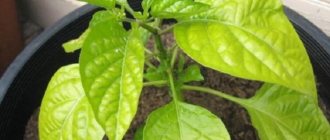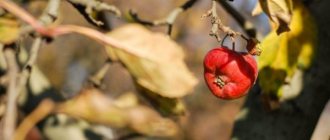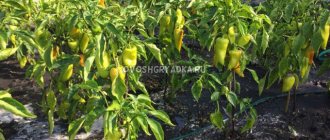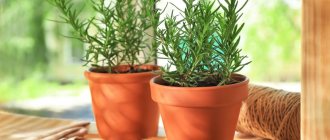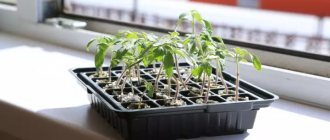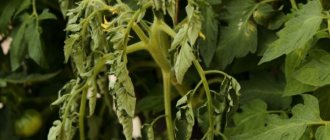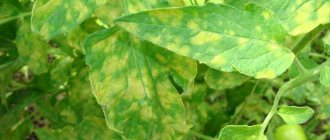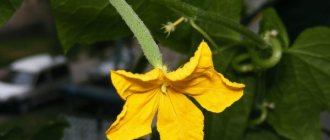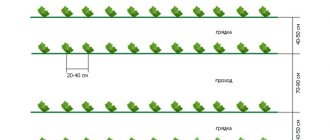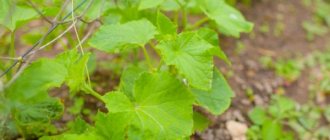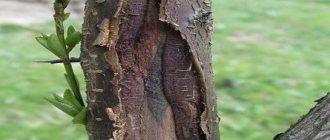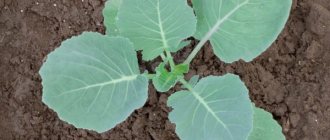Vegetable growing » Tomatoes
0
2753
Article rating
Kira Stoletova
Often, gardeners when growing tomatoes are faced with the problem of dried tomato foliage. There may be several reasons why leaves on tomatoes dry out, and different measures are taken for each case.
Reasons for leaves drying on tomatoes
Root damage
If only the lower part dries, then most likely the cause is damage to the root system
. Signs:
- The lower leaves of tomatoes dry out and fall off . At the same time, the upper part of the bush looks healthy and no problems are observed.
- The lower part of the barrel also doesn't look the best . It often changes color, the surface becomes dry, often darkens or acquires an unhealthy brown tint.
How to fix the problem:
| Loosen the soil correctly Cultivate the soil to a shallow depth. Since the root system of tomatoes is branched, but lies shallow, therefore, when loosening deeper than 5 cm, many small shoots are damaged, which absorb moisture and the plant experiences a water deficit. Use a suitable tool . Rippers are best suited, as in the example in the photo. They loosen the soil well without going too deep | |
| Make small mounds around plant trunks Pour soil to a height of 5-7 cm. This, firstly, will protect the roots from damage, and secondly, stimulates the formation of new shoots in the buried part. Periodically renew the embankment and loosen the surface . It is important to create optimal conditions for the development of new roots and eliminate the consequences of damage to the root system | |
| Water with fungicide solution Often the cause of root suppression is damage to the roots by diseases or pests. It is difficult to detect such a problem, so it is better to carry out prevention. Use any complex systemic fungicide . Use it strictly according to the instructions. It is recommended to water the tomatoes first so that the composition penetrates better into the soil. |
Characteristics of tomato culture
Belonging to the nightshade family, tomatoes are a herbaceous plant with a stem reaching a height of 0.3 m to 2 m, and a root system that can go deeper than 1 m. The odd pinnate dark green leaves often resemble potatoes; the yellow flowers are inconspicuous in appearance. appearance, but the fruits in the form of berries of different sizes look impressive when colored in numerous shades of red, as well as yellow, white, green and even black.
The weight of tomatoes varies from 50 to 800 g. Tomatoes are one of the most popular vegetable crops. At the same time, they are considered one of the most capricious vegetables, requiring strict adherence to agrotechnical rules and great care when caring for them.
Did you know? The authority of botanical scientists classifying tomatoes as berries was not enough for the US Supreme Court, which by its decision condemned tomatoes to be considered vegetables. More
“
further
”
by classifying tomatoes as fruits.
Lack of moisture
Lack of moisture leads to many problems, but the leaves are the ones that suffer first.
Signs of a problem:
- At first, the foliage begins to fade a little . The stems become soft, the tops and ends of the shoots droop and lose their elasticity.
- Over time, the foliage begins to curl . Then it turns yellow, and at the most advanced stages it turns black and falls off.
What to do:
| Water the plant generously At the first sign of a lack of moisture, you need to moisten the soil well. At least 20 liters are poured under each large bush. If the plant is not tall, then the soil is saturated to a depth of at least 30 cm. Use only warm water . It is advisable to leave it for a day so that the temperature is the same as the air temperature. Cold water is an additional stress for plants and the risk of disease. | |
| Water frequently if necessary If you watered the seedlings often and with small amounts of water, then it developed upper suction roots. Therefore, the plant gets used to collecting moisture from the surface, and the deep roots almost do not participate in this. The problem can only be solved by frequent moderate watering . The plant can absorb water well only in this way, so there is no other way out. In this case, it is very important to loosen the surface to reduce the evaporation of moisture from the soil. | |
| Use a drip irrigation system This option provides a constant supply of water under the tomato trunk. The plant is constantly moistened in the required quantities, so the risk of moisture deficiency is minimal. It is best to install the system immediately after landing . This is how plants adapt to a certain regime and absorb moisture as efficiently as possible. |
Biological causes of drying of leaves and fruits
With the appearance of yellowness on the leaves and fruits of tomatoes, there are many gardeners who are sincerely perplexed why, with optimal watering and quality care, tomatoes grown in a greenhouse dry out and turn yellow.
If the leaves on the tomato bushes turn yellow or dry out, then they should be carefully examined, which will help to correctly identify the cause of this phenomenon.
- The appearance of yellowness on the lowest leaves, followed by drying and falling off, is typical for planting overgrown seedlings in a greenhouse. Under such conditions, the growing green mass remains green and healthy.
- Tomato leaves very often turn yellow as a result of a lack of nutrients and microelements necessary for growth and development in the greenhouse soil. This type of mineral starvation is called chlorosis.
- A lack of manganese causes yellowing of young leaves and drying out of old foliage on the lower tier. With a low amount of sulfur, the leaves do not just turn yellow, but thicken and become hard with a high degree of fragility. Reducing the amount of iron also changes the color of tomato leaves. Nitrogen-magnesium deficiency provokes yellowing and curling of leaves, which first dry out and then die completely.
- Compliance with the irrigation regime is of no small importance. With insufficient watering, plants wither and dry out, and a prolonged lack of moisture can completely destroy tomatoes grown in a greenhouse.
Lack of nutrition
If there is a lack of nutritional components, the tips or edges of the foliage most often dry out.
Signs of the problem:
- Most often, the foliage begins to be damaged unevenly . The leaf blades dry out at the edges, curl, and often turn red or acquire another unnatural color. The plant looks weak and develops poorly.
- Problems are observed not in individual parts, but throughout the entire bush . And the more drying occurs, the more difficult it will be to save the plants.
What to do if you have a nutritional deficiency:
| Apply fertilizer when planting To avoid problems in the spring, it is important to prepare the area for tomatoes.. For this purpose, mineral complexes or organic compounds are used. An excellent solution is rotted compost or humus with wood ash . The proportions are observed: half a liter of ash per bucket of humus. The mixture is applied before digging the soil | |
| Feed with nitrogen fertilizers Apply the composition in the first half of the growing season, when the plant is intensively developing and growing. Manure or compost works well . It contains a lot of nitrogen and decomposes quite quickly in the soil | |
| Apply phosphorus-potassium fertilizers in the second half of the growing season It is best to use mineral complexes in the form of granules. They slowly dissolve in the soil and are not washed out of it, providing constant nutrition to the plant. You can use ash . In this case, it is diluted with water in a ratio of 1:20 and infused for 2-3 days before use. |
The author of the video talks about the problem of potassium deficiency - the edges of the leaves begin to dry, and at the same time the ovaries begin to turn yellow.
How to save seedlings
If the reason is poor maintenance of the seedlings, then it can be corrected very simply by rearranging the boxes and providing proper care for the plants. When indoor air is dry, seedlings need to be sprayed periodically. You can place containers of water next to the plants.
It happens that the soil in the boxes is too salty, which is why the leaves begin to turn yellow. In this case, you need to remove the top layer of the substrate and replace it with fertile one.
Seedlings can become infected with late blight, the first sign of which is yellowing of the leaves. The first thing to do in this case is to spray the seedlings with Fitosporin. Remedies such as Bordeaux mixture or copper sulfate also help get rid of this disease. All affected parts of the seedlings must be cut off.
Fusarium is another scourge that can infect tomato seedlings. The appearance of this seedling disease is easier to prevent than to cure it. Seeds must undergo pre-planting treatment by soaking in a solution of a suitable fungicide. Diseased plants will have to be transplanted into fresh, sterile soil and treated with antifungal drugs for vegetables.
The black leg can “mow down” all seedlings of peppers and tomatoes. Usually this disease begins to develop if the seedlings grow very densely in a common box. Another reason is violations of the rules of care. It is advisable to sow seeds at a distance of 3 cm from each other. When planting tomatoes, you need to add sand to the soil to increase permeability. To prevent the room from being excessively humid, regular ventilation is necessary. To get rid of blackleg, seedlings should be dusted several times with wood ash. The surface of the substrate in the boxes is also sprinkled with ash.
Very often, on tomato seedlings, especially after picking, the tips of the leaves dry out. Plants need increased humidity after transplantation. Therefore, in a room with dry air and on a south window, transplanted sprouts may become sick. It is necessary to spray the plants with water from a spray bottle or place containers of water next to the tomatoes.
The tips of the leaves can also dry out as a result of a lack of potassium. In this case, it is necessary to fertilize the seedlings with fertilizers that contain this element.
Often seedlings begin to shed leaves due to too high air temperature in the room. In this case, it is necessary to ventilate the room more often and lower the temperature in it. The optimal temperature for the proper development of vegetable seedlings is about +20.
Insufficient lighting
Tomatoes bear fruit well only with plenty of natural light.
Signs of a problem:
- Plants begin to grow poorly . The stems become thinner, the foliage first withers, and then turns yellow and crumbles. The tomato develops poorly and often stops producing new clusters of color.
- The greenery is fading . When inspecting during the day, you need to make sure that the sun shines on the tomatoes for at least half of the daylight hours.
How to solve a problem:
| Add artificial lighting Option used when growing in greenhouses. Special lamps are purchased that artificially increase the period of plant illumination. It is best to use LED lamps . They consume very little energy and shine brightly | |
| Remove bushes and plants that block the sun If tall crops grow near the tomatoes - corn, beans on a trellis, etc., then you need to remove them. If trees and bushes are in the way, they need to be cut down . This will improve the fruiting of all crops in the garden | |
| Use reflective surfaces If there is a wall or fence next to the tomatoes, then foil is attached to them, as in the photo. When growing in open ground, you can use mobile shields . They rotate to always direct sunlight towards the plant |
Insect infestation
Another reason for tomato leaves drying out is insect damage. To determine the specific type of pest, it is worth carefully examining the leaves, especially from the back side.
Aphids are represented by small black individuals that prefer to live in the folds of the plant. They not only suck out the juice from the bush, but also inject a substance that causes deformation changes. The fight is carried out using an insecticide, and all tomatoes in the greenhouse are treated.
Reviews from gardeners
Vadim, Astrakhan
The meaning of the root is quite weak for such a leaf. In my situation, I removed something from the leaves from below (at least slightly reduce the leaf apparatus). I had Quadris on hand (which enhances photosynthesis as a side effect) and Aktara (which also enhances root development as a side effect) - I gave it a drop at a time...that’s all.
Source: fermer.ru
Alevtina, Khimki
You need to increase fertilizing with potassium: ash or potassium sulfate. Sprinkle ash under the plants, spray/water with ash extract or a solution of the mentioned potassium sulfate 1 tbsp. spoon for 10 liters - 1 - 1.5 liters per plant. Excess potassium is not dangerous either for plants or for us.
Source: www.forumhouse.ru
